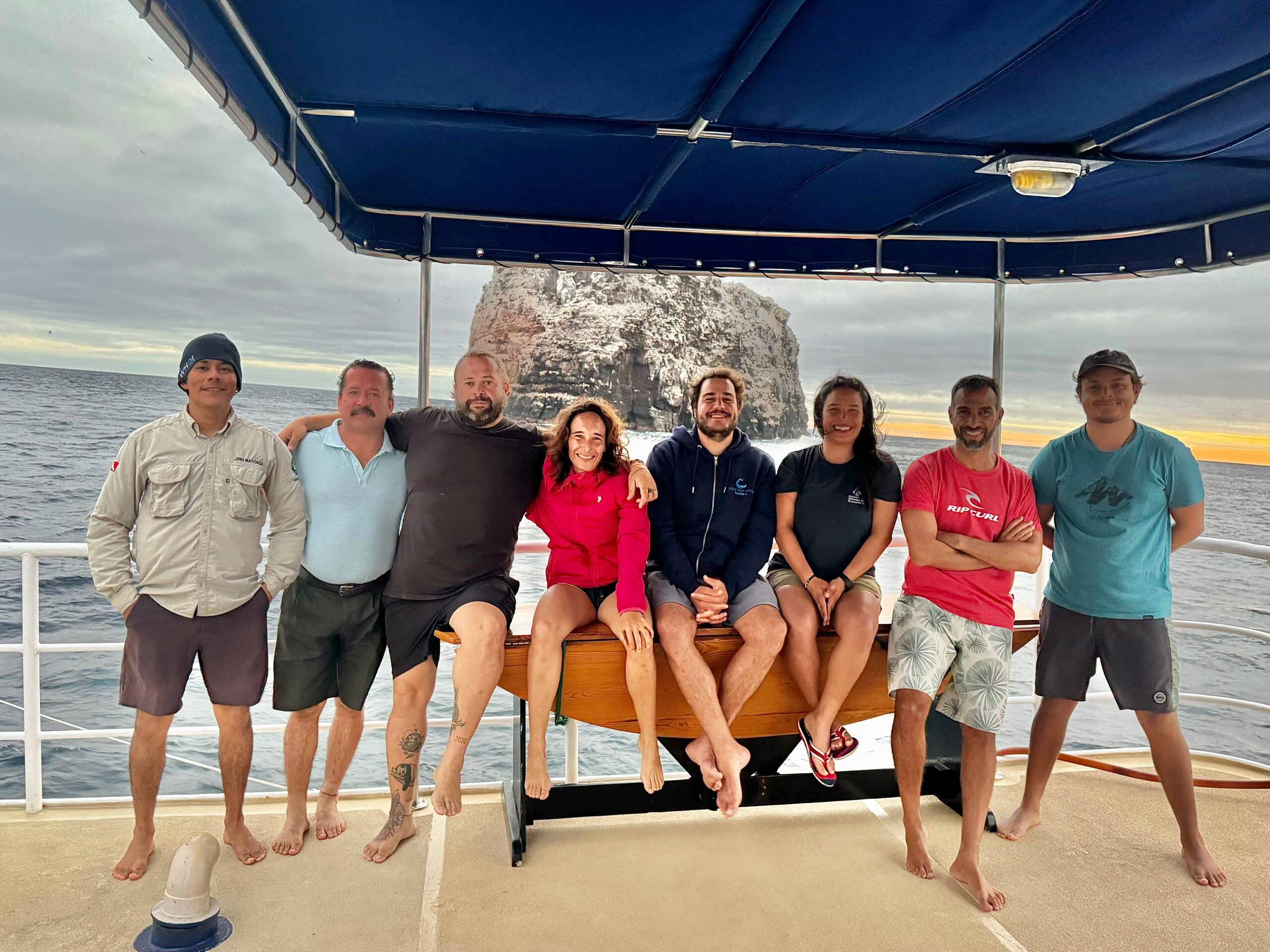Born and raised in the sharkiest place on earth
I was born and raised in the Galápagos Islands; a place surrounded by sharks. However, it wasn’t until I traveled to Mexico to study marine biology that I had my first real encounter with these magnificent predators. While growing up on my native island, it was common to see them while diving or snorkeling, but there’s a world of difference between merely seeing them and engaging in an all-out battle to tag them for their well-being.
My fascination with marine life, and specifically, sharks, began with my first dive at Gordon Rocks in the Galápagos. Just ten minutes into my underwater journey, I found myself surrounded by an astonishing congregation of at least 100 scalloped hammerhead sharks. They swam among us with a contagious calmness. That transformative moment marked the beginning of my personal commitment to these captivating creatures. I decided to dedicate my undergraduate thesis to their study, with the goal of getting to know them intimately, understanding their lives, and contributing to their protection.

A scalloped hammerhead shark swims pasts a reef fish cleaning station at Darwin’s Arch. Photo © Pelayo Salinas
For the past decade, I have lived in Mexico, where I completed my undergraduate and master’s degrees while researching and working with sharks in the Gulf of California. I’ve gained experience in various aspects, from tagging and tracking sharks to observing their behavior and deciphering their history to contribute to their conservation worldwide, except in my homeland.
This year, during a vacation visit to my family on the islands, I received an unexpected message from Dr. Pelayo Salinas, co-PI of the Shark Ecology Project at the Charles Darwin Foundation. He asked if I would be interested in volunteering during my stay on the islands. My response was an emphatic “yes.” Finally, after so much time, the opportunity arose for me to contribute to shark research in the islands where I grew up.
The expedition took me to two natural gems in the northern part of the archipelago, Darwin, and Wolf. From the moment the anchor dropped, I could sense the magnificence of this place. Although I had heard about Darwin and Wolf, I had never had the chance to dive in their waters.

Team work makes the dream work. Photo © Antonio Linares
For me, this experience was unique, and I was determined to make the most of it. Over the course of 11 days on the expedition, we engaged in a variety of activities, including shark tagging, taking biopsies, diving with DOVS to conduct fish counts, and learning from the experts.
The activity I enjoyed the most, without a doubt, was scuba diving. However, what struck me the most was shark fishing for deploying satellite tags. Despite my previous experience in Mexico, there was a noticeable difference. There, the fishermen were responsible for the strenuous task of capturing the shark to facilitate tagging. On this expedition, it a joint responsibility with local Galapagos fishermen to catch them and handle them safely for our work. Often, I had to battle against the shark’s powerful tail, and, boy, did they put up a fight! These minutes were intense, but when we finally released the shark with its satellite tag deployed and in very good condition, we were filled with a sense of satisfaction and relief. The skill of the fishermen and the efficiency of the entire team were truly impressive, as were those formidable silky shark females, measuring over two meters, that resisted tagging with tenacity.
Without a doubt, the experience was enriching, and I hope to continue doing science in a place as wonderful as the Galapagos.

The long waiting hours during shark tagging are better in booby company. Photo © Walter Pisco
